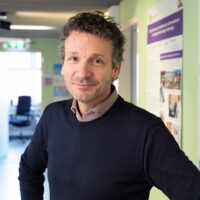Good news from the heart of the Netherlands! In fact, the number of animal experiments at Utrecht University and UMC Utrecht has dropped for the second year in a row in 2024. According to the joint Annual Report on Animal Experiments 2024, 12,584 animal experiments were conducted last year. In 2023, there were still 14,192.
And there is also a first: the annual report provides insight for the first time into how many animals were used to extract research materials. Utrecht is thus making an important contribution to the recognition of all animals in research. Including animals that according to the letter of the law are not laboratory animals and are therefore usually not included in the reporting figures.
Fewer mice and rats in particular
Pascalle van Loo, head of the Animal Welfare Body Utrecht, says that in Utrecht itself they are also pleased with the decrease: ‘We are pleased that the number of animal experiments has decreased for the second year in a row and that our efforts to replace and reduce animal experiments are starting to bear more and more fruit. Like last year, we see that the reduction in the number of animal experiments is mainly due to a decrease in the use of mice and rats, at both Utrecht University and UMC Utrecht.’
The decrease continues
According to Van Loo, there is a structural decrease, but it is possible that individual studies will still cause fluctuations in the decreasing trend in the future:
‘Fluctuations in experiments in which large numbers of animals are used may still have an effect on the totals. For example, a future experiment in which zebrafish are used may cause the number of animal experiments to increase again in the coming year. But viewed over several years, my estimate is that the decline will continue.’
In other words, the decline has not only begun but will continue in the coming years. Should the number of animal experiments increase again somewhat next year, that is no reason to panic. Because of occasional outliers, the number of animal experiments will probably not fall in a straight line, but in an undulating line.
Utrecht: ahead of animal-free innovation
That this good news comes from Utrecht, is not surprising as far as we are concerned. Again and again, we see Utrecht leading the way in the Netherlands in the transition to animal-free research. For example, Utrecht University and the UMC Utrecht have been investing for years in reducing the number of animal experiments, they use innovative non-animal methods such as organs-on-chips, and they are actively involved in the national program Transition to Animal-Free Innovation (TPI).
And the Virtual Human Platform, which will assess the safety of chemicals and drugs with advanced computer models, is also being developed in Utrecht. The platform brings together data about the human body and the properties of substances. Using smart algorithms, the platform will eventually be able to predict how different groups of people react to a particular substance.
Last year also saw the establishment in Utrecht of the Center for Animal-Free Biomedical Translation with help from the National Growth Fund. This center focuses on accelerating the animal-free development of drugs for complex diseases such as ALS, cystic fibrosis, asthma and rheumatism.
Unique attention for ‘invisible animal-use’
The fact that Utrecht University and the UMC Utrecht are for the first time also charting how many animals were indirectly used for research is unique. This involves animals that are not laboratory animals according to the letter of the law, but that do suffer for the sake of science. For example, substances are extracted from tumors that researchers grow in mice and from the blood of the calves of cows that turn out to be pregnant at the slaughterhouse.
Distressingly, these kinds of substances are now often used to grow human cells, for research that is thus animal-free but not animal-free. At Utrecht University and UMC Utrecht together, some 1,600 calves and 2,000 mice were used for this purpose last year.
There are animal-free alternatives, such as gels and serums made from plants or synthetics. But not all researchers yet know how to find the right alternative for their research, and for some applications an alternative has yet to be developed. This is precisely why it is important to also keep this group of animals in mind: because only when we acknowledge the suffering of all animals can we change their fate.
This is also endorsed by cell biologist Jeffrey Bajramovic, director of the 3Rs Centre in Utrecht. From the center, he is engaged in reducing, refining and replacing animal experiments: ‘To combat this invisible animal use, we actively encourage the use of animal-free alternatives, including with publicly accessible databases. We will also continue to monitor developments in invisible animal use in the coming years.’

Earlier we interviewed him about the database in which he brings together animal-free alternatives. With this database he wants to lower the threshold for researchers to switch to an animal-free alternative for growing cellsEarlier we interviewed him about the database in which he brings together animal-free alternatives. With this database he wants to lower the threshold for researchers to switch to an animal-free alternative for growing cells.
On to another year of animal-free successes
In short: with the declining number of animal experiments and the transparency about the animal suffering that normally remains invisible, Utrecht once again confirms its pioneering role in the transition to an animal-free Netherlands. We will therefore follow the developments from Utrecht closely again next year.

